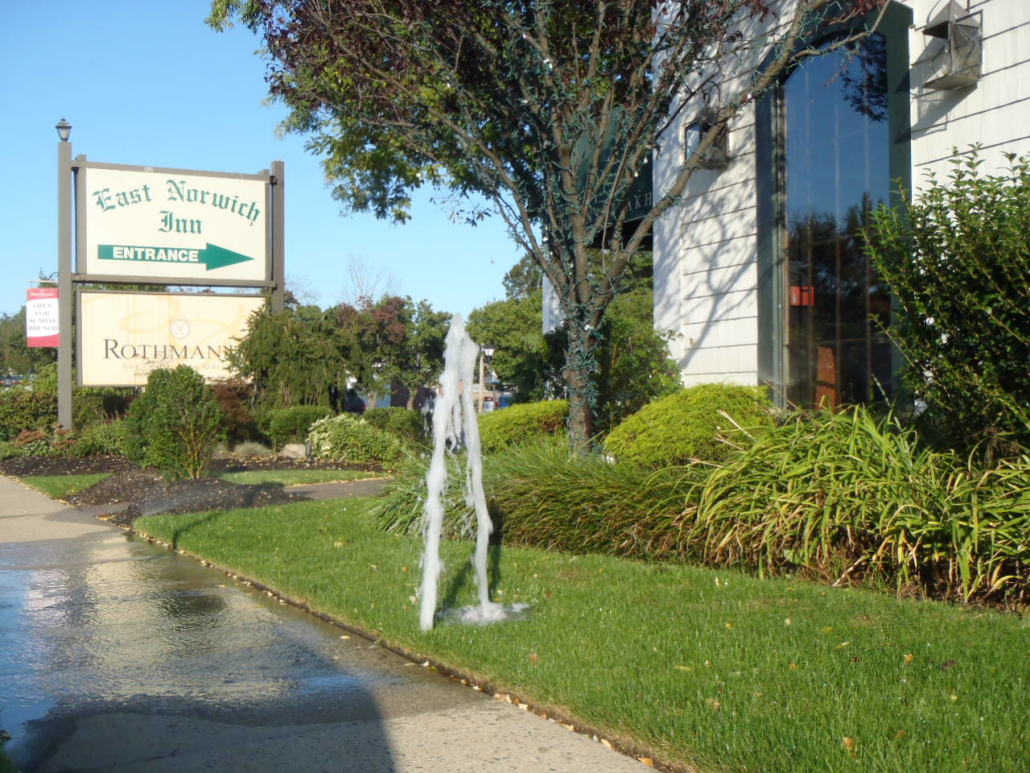Sprinkler System Repairs
 Repairing a sprinkler system covers a wide range of services, replacements, and repairs here on Long Island. A small sampling of the most popular includes:
Repairing a sprinkler system covers a wide range of services, replacements, and repairs here on Long Island. A small sampling of the most popular includes:
• Pipe repairs
• Sprinkler head replacement
• Electrical troubleshooting
• Controller programming
• Cleaning and flushing a solenoid valve
Diagnosing and troubleshooting a sprinkler system can be simple and easy to find and fix e.g. broken sprinkler head or can be very complex and time consuming as in tracking and finding a short in a field wire.
The prompt repair of an automatic lawn sprinkler system is very important to prevent damage to a landscape and wasted water. At Rain Rich we recommend that owners do a quick 2 minute test run of their sprinkler system a minimum of 2 xs per month during the summer in order to observe and look for a proper operating system. Here’s what to look for:
1. Controller and display.
2. Rain sensor or smart irrigation equipment.
3. Manual operation of sprinkler system.
4. Sprinkler heads popping up and rotating.
5. Leaks in and around the valve box (es).
6. Leaks in the ground and around the property.
7. Puddles or damaged lawn and landscape.
In addition to finding and repairing the obvious broken pipes and missing sprinkler heads it is also important to check for:
1. Clogged sprinkler nozzles
2. Out of adjustment sprinkler heads
3. Blocked sprinkler heads from overgrown vegetation
4. New landscaping coverage
Another frequent and obscure repair that we receive many sprinkler repairs calls for is in the month of June due to roots of trees growing and growing around sprinkler pipe in the ground and strangling the pipe and reducing or stopping the flow of water. Sometimes it is very obvious to us in that we will observe half the sprinkler heads in one zone operating correctly and the other half the heads trickling out water. Somewhere in the middle the roots have grown around the pipe and cut it off.
Electric solenoid valves can become contaminated with dirt and debris which can cause failure of the opening and closing. Most solenoid valves are normally closed position and open on command. When a valve “fails” it fails in the “open position” and the zone will stay on and water until it is manually shut down. This can waste thousands of gallons of water and potentially ruin a landscape literally washing it away! You cannot shut the zone down by using the controller because the debris is in the hydraulic part of the valve and physically cannot close. The main supply valve to the entire sprinkler system needs to be closed and the valve needs to be taken apart and flushed and or damaged parts need to be replaced. The valve then needs to be reassembled and tested “on” and “off” several times from the controller to insure that it will operate properly and at the proper time. Debris can enter the valve from the source of water and this can include the water supplier. I have found pieces of glass, nuts, bolts, rocks, dirt, mud, sediment, and other unidentifiable objects inside a solenoid valve that was stuck in the “open” position. Typically I find this to occur in the spring when the entire community opens it sprinkler system and starts using at the same time or when it is very hot and everyone is using their sprinkler system. There is a lot of debris in your water!
Another problem that I encounter while maintaining my client’s sprinkler system is damage to the field wiring. The field wiring is the wiring that connects the controller to the solenoid valves in the ground. This problem can occur over time due to wear and tear, freezing and thaw of the ground, tree roots, rodents chewing, landscaping work, utility work, and anytime the ground is disturbed by outside influences. When you have a problem your controller might read “short” or “open”. Some zones may work and some may not. I have many kinds of electrical diagnostic equipment to quickly find the problem. First order of business is to walk the property and look for a visual disturbance to the ground. The problem may be obvious and the repair can be simple.
The above examples are just a small sampling of the sprinkler repair calls I receive. A well designed and properly maintain irrigation system will eliminate many of the problems for many years. However, due to the nature of the many components, that an irrigation system is in the ground exposed to freezing and thawing conditions, the changing landscape, and maintenance of ground and property there will be damage to the system during its existence and repairs will be necessary. Investing in a great irrigation design, equipment, and installation will save you many service calls down the road and many headaches!
